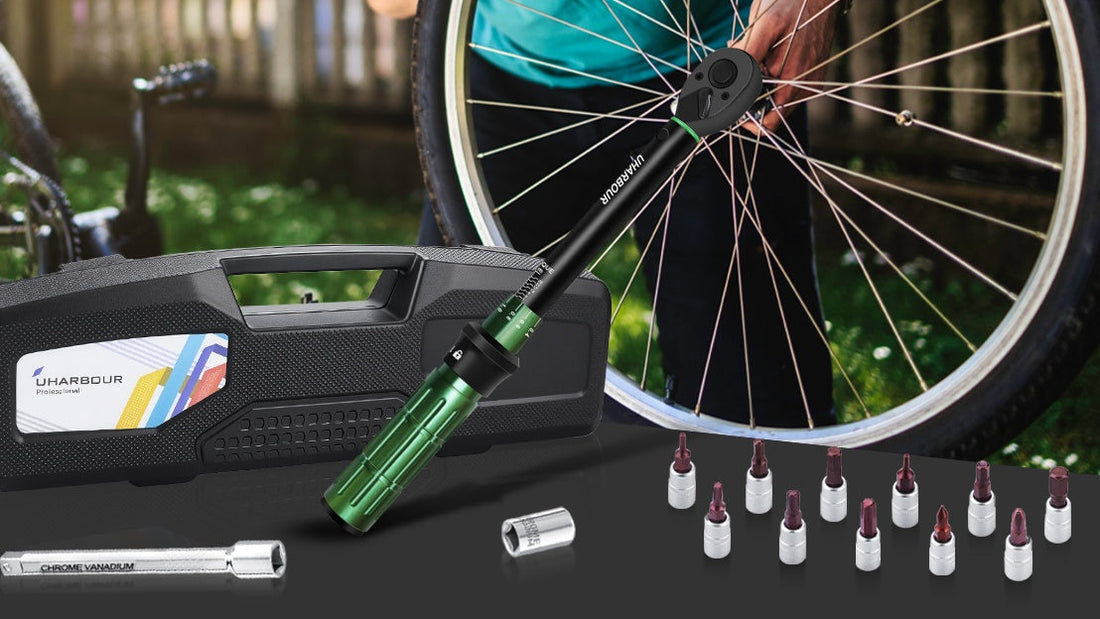
Where Does a Torque Wrench’s Accuracy Come From? Inside the Mechanics, Technology & Future Trends
In the world of car, motorcycle, and bicycle maintenance, the torque wrench is one of the most trusted tools for both professionals and DIY enthusiasts. It ensures that bolts and nuts are tightened to the correct torque specification—no more, no less—preventing costly damage and serious safety risks.
But have you ever wondered: where does a torque wrench’s accuracy actually come from? What’s inside it, and how does it achieve such precision? And what’s next for this essential tool?
Torque Basics: From Physics to Real-World Application
The formula for torque is simple:
Torque = Force × Lever Arm Length
For example, applying 10 newtons of force on a 0.3-meter wrench creates a torque of 3 Nm.
The job of a torque wrench is to make this relationship controllable, measurable, and repeatable in real repair work.
A Brief History of Torque Wrenches
- 1918: Conrad Bahr, an engineer in New York, invented the first torque wrench to prevent utility bolts from loosening.
- Mid-20th Century: Click-type and beam-type torque wrenches became widely used.
- 21st Century: Digital torque wrenches entered the market, bringing higher precision and advanced features.
👉 This evolution reflects a simple truth: precision has always driven progress.
The Inner Workings of Mechanical Torque Wrenches
Traditional mechanical torque wrenches rely on a spring + lever mechanism to achieve accuracy.
- Spring: Adjusting the handle compresses the spring to set the target torque.
- Lever: Once the torque is reached, the lever “breaks” or clicks, signaling the correct tightening.
- Reading Styles:
- Beam type: read directly from a scale.
- Click type: feel or hear the “click.”
👉 Pros: Durable, battery-free, reliable.
👉 Cons: Requires periodic calibration, accuracy depends on user skill.
The Science Inside Digital Torque Wrenches
Digital torque wrenches use strain gauge sensors or Hall-effect sensors to measure torque.
- Strain gauge: Detects micro-deformations in a metal bar under torque, converting them into electrical signals.
- Electronics: Signals are processed and displayed as precise numbers.
- Features: LCD display, buzzer alerts, LED indicators, and data storage.
👉 Pros: Higher accuracy (as low as ±1%), clear readings, advanced functions.
👉 Cons: Requires batteries, usually more expensive.
What Determines Accuracy?
Whether mechanical or digital, accuracy depends on:
- Manufacturing quality: precision springs, sensors, and machining.
- Material stability: fatigue-resistant steel or aerospace-grade alloys.
- Calibration: according to ISO 6789, wrenches should be calibrated every 12 months or ~5000 uses.
- Environmental factors: temperature and humidity affect both springs and sensors.
- User habits: fast or jerky tightening, or storing a wrench under preload, can reduce accuracy.
Why Accuracy Matters: Real-World Examples
- Car engine bolts: Over-tightening → stripped threads; under-tightening → leaking gaskets.
- Motorcycle brake calipers: Loose torque → brake failure, risking accidents.
- Carbon fiber bicycles: Excess torque → cracked frames or ruined parts.
👉 A small torque error can mean big money lost—or even lives at risk.
Calibration & International Standards
Torque wrenches don’t stay accurate forever.
- Standards: ISO 6789 defines torque wrench accuracy classes and test methods.
- Professional calibration: Performed using certified torque testers.
- DIY check: Hanging known weights at measured distances for a rough validation.
The Future: Smart Torque Wrenches
With IoT and AI on the rise, torque wrenches are getting smarter:
- Bluetooth & apps: Record torque data and generate service reports.
- Cloud storage: Teams can track and share maintenance history.
- AI assistance: Predict thread fatigue and recommend torque values.
- Wireless compact design: Easier to carry and more efficient.
👉 Tomorrow’s torque wrench won’t just be a tool—it’ll be a digital assistant for precision and safety.
Conclusion
The accuracy of a torque wrench comes from a mix of physics, engineering, materials, calibration, and user care.
Whether mechanical or digital, a good torque wrench is more than a tool—it’s a guarantee of safety, reliability, and professionalism.
Next time you hear that reassuring “click” or see the exact number on your screen, remember: behind it lies a century of innovation and the promise of smarter tools ahead.
